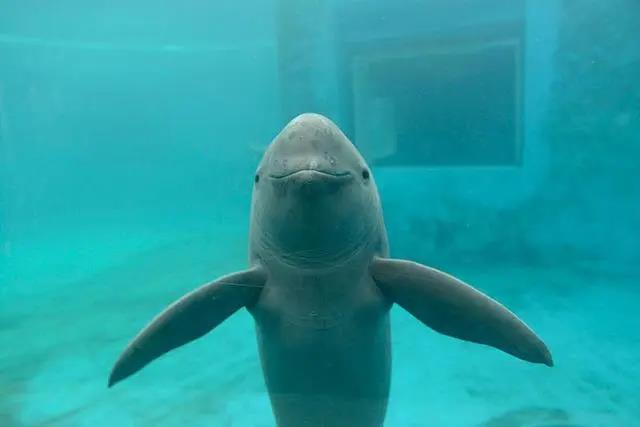The establishment of Yangtze finless porpoise protection network in the middle and lower reaches of the Yangtze River has laid a solid lifeline for finless porpoise protection
People’s Daily Online, Wuhan, March 1 (Zhang Pei) On February 28, the Ministry of Agriculture and Rural Affairs announced the results of the scientific investigation of the Yangtze finless porpoise in 2022. The population of the Yangtze finless porpoise was 1,249, and the number of finless porpoises stopped falling and rebounded. A few days ago, it was learned from the Institute of Hydrobiology, Chinese Academy of Sciences (Wuhan) that the unit, as the main technical support unit, actively participated in the scientific investigation and protection of the Yangtze finless porpoise, and has now promoted the formation of a Yangtze finless porpoise protection network covering the middle and lower reaches of the Yangtze River in China.

Data map of Yangtze finless porpoise. Photo courtesy of Institute of Aquatic Sciences, Chinese Academy of Sciences
The Institute of Hydrobiology, Chinese Academy of Sciences has been devoted to the study of the population ecology and conservation biology of finless porpoises for a long time, systematically investigated the finless porpoises’ populations and habitats in the Yangtze River basin, and on this basis, developed the cut-off sampling survey method and the towed acoustic survey method suitable for the Yangtze River environment, which have been applied to the investigation of finless porpoises’ populations in the basin for many times.
In 2006, 2012 and 2017, Institute of Hydrology, Chinese Academy of Sciences led three Yangtze finless porpoises expeditions, and timely and effectively evaluated the population dynamics of Yangtze finless porpoises. The relevant investigation results became an important scientific basis for the assessment of the present situation of Yangtze finless porpoises in China. In 2022, under the overall arrangement of the Yangtze River Office of the Ministry of Agriculture and Rural Affairs, the Institute of Aquatic Sciences of the Chinese Academy of Sciences, together with relevant scientific research units, formulated the technical scheme and implementation scheme of the "2022 Yangtze finless porpoise scientific investigation".
It is reported that, unlike the previous investigation of the whole basin by a scientific research team, this time the plan was improved and divided into several sections according to the geographical pattern. The main stream was divided into four sections: Yichang to Chenglingji, Chenglingji to Hukou, Hukou to Nanjing and Nanjing to the mouth of the Yangtze River, and then Dongting Lake, Poyang Lake and Hanjiang River, a tributary of the Yangtze River, were investigated.
"This investigation also applied new technical means, including environmental DNA and image-aided monitoring system and real-time passive acoustic monitoring technology, and specially developed data automatic recording software, in order to further improve the observation efficiency of Yangtze finless porpoise and improve the accuracy of population survey." Wang Kexiong, a researcher at the Institute of Hydrobiology of the Chinese Academy of Sciences and secretary-general of the Wuhan Baiji Dolphin Protection Foundation, said.
After the scientific investigation of the Yangtze finless porpoise in 2022, the Institute of Aquatic Sciences of the Chinese Academy of Sciences organized relevant scientific research units to analyze the investigation data of the whole basin, calculate the population number of the Yangtze finless porpoise, and took the lead in compiling the Summary Report of the Scientific Investigation of the Yangtze finless porpoise in 2022.
The Institute of Aquatic Sciences of Chinese Academy of Sciences has been closely combining protection with research. In 1986, it first proposed three major protection measures for finless porpoises: in-situ protection, ex situ protection and artificial breeding research. In 1996, the artificial breeding of Yangtze finless porpoise was carried out. In 2005, the world’s first Yangtze finless porpoise bred in artificial environment was successfully born in Baiji Dolphin Museum, Institute of Aquatic Sciences, Chinese Academy of Sciences. In 2020, the second generation was successfully bred in artificial environment.
The relevant person in charge of the Institute of Aquatic Sciences of the Chinese Academy of Sciences said that as the main technical support unit, it has promoted the establishment of a number of dolphin nature reserves in the main stream of the Yangtze River and the two lakes, basically formed a Yangtze finless porpoise protection network covering the middle and lower reaches of the Yangtze River, and promoted the establishment of three ex-situ conservation areas, with an ex-situ population of more than 150, which has built a solid lifeline for the protection of the Yangtze finless porpoise.